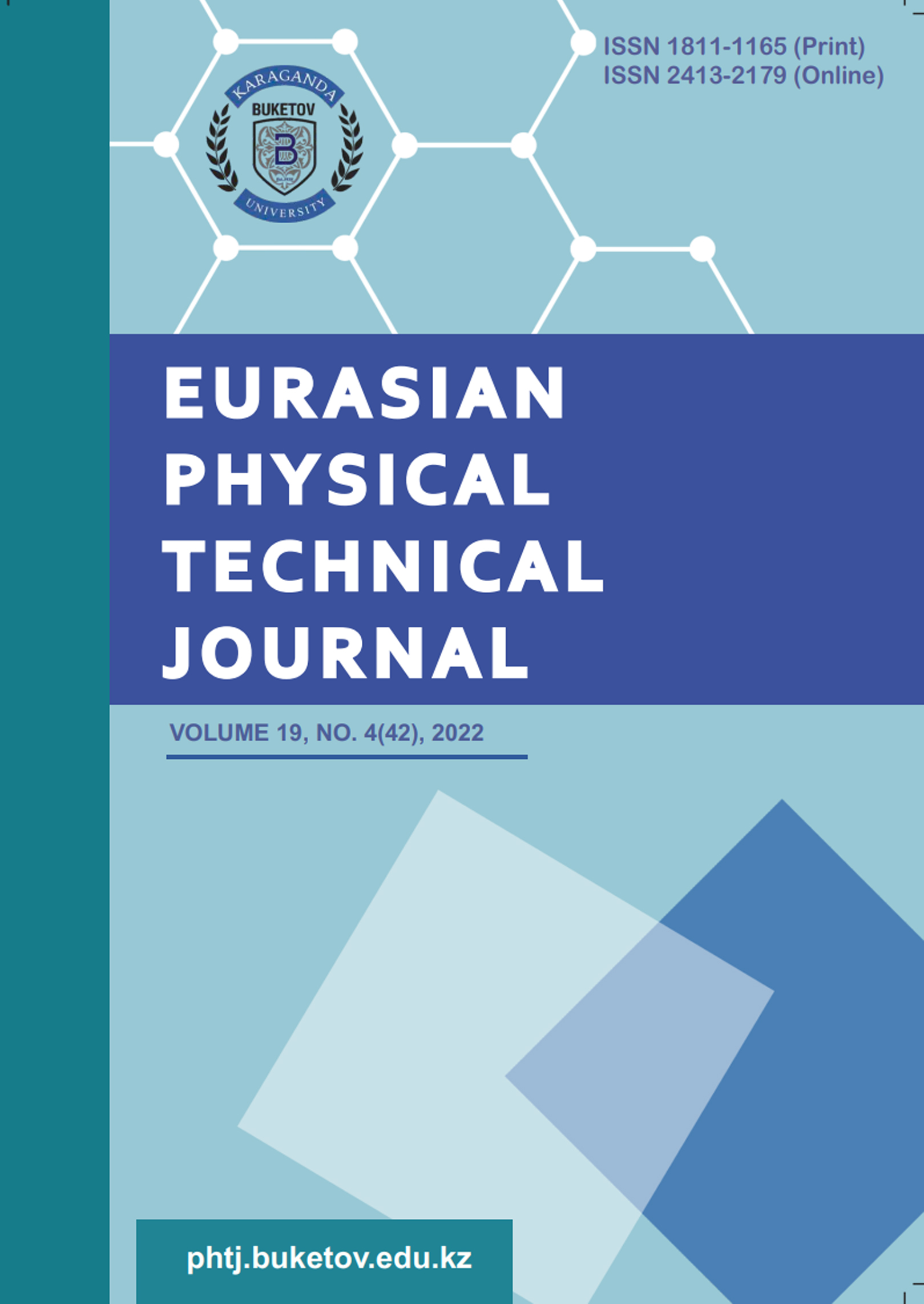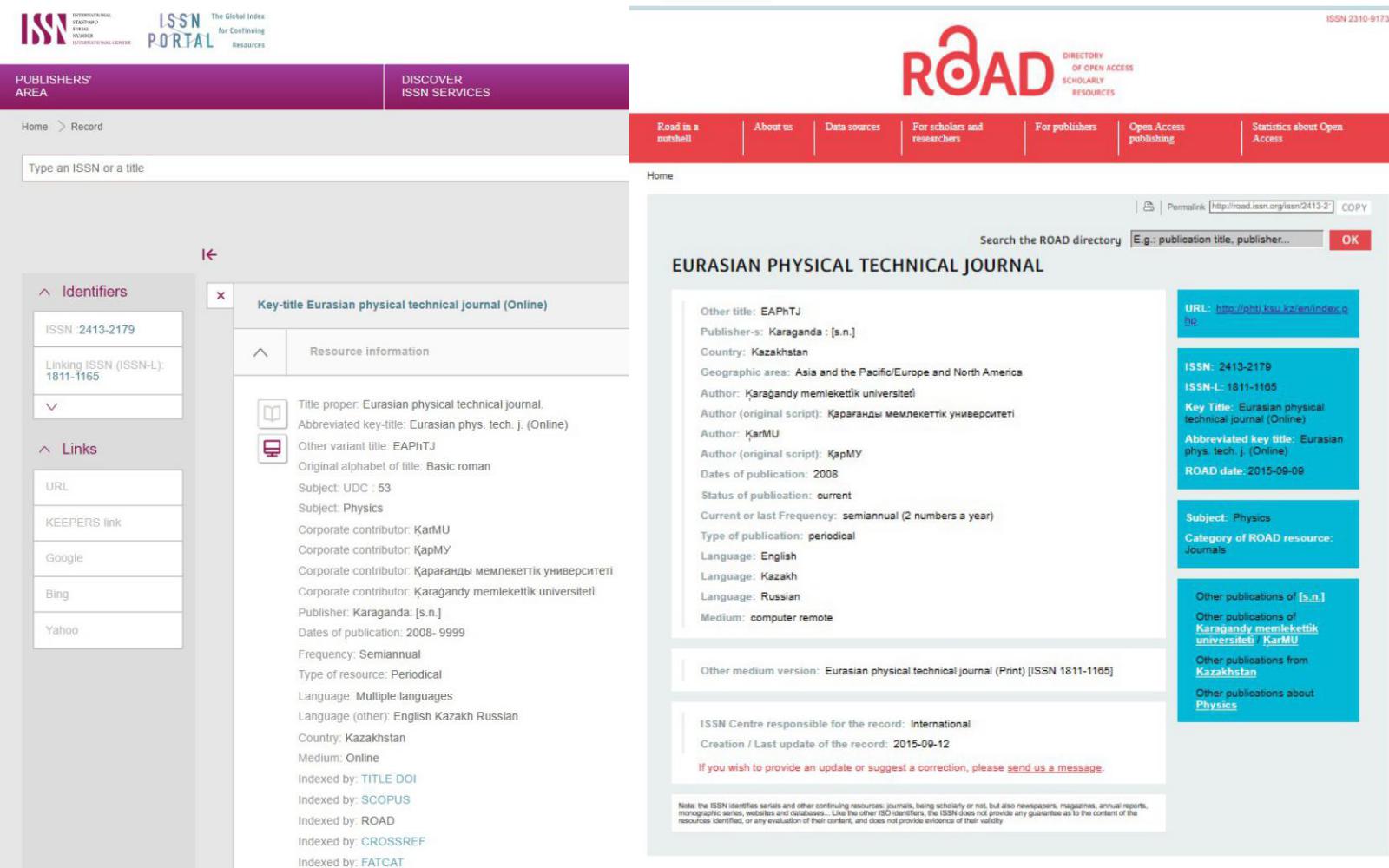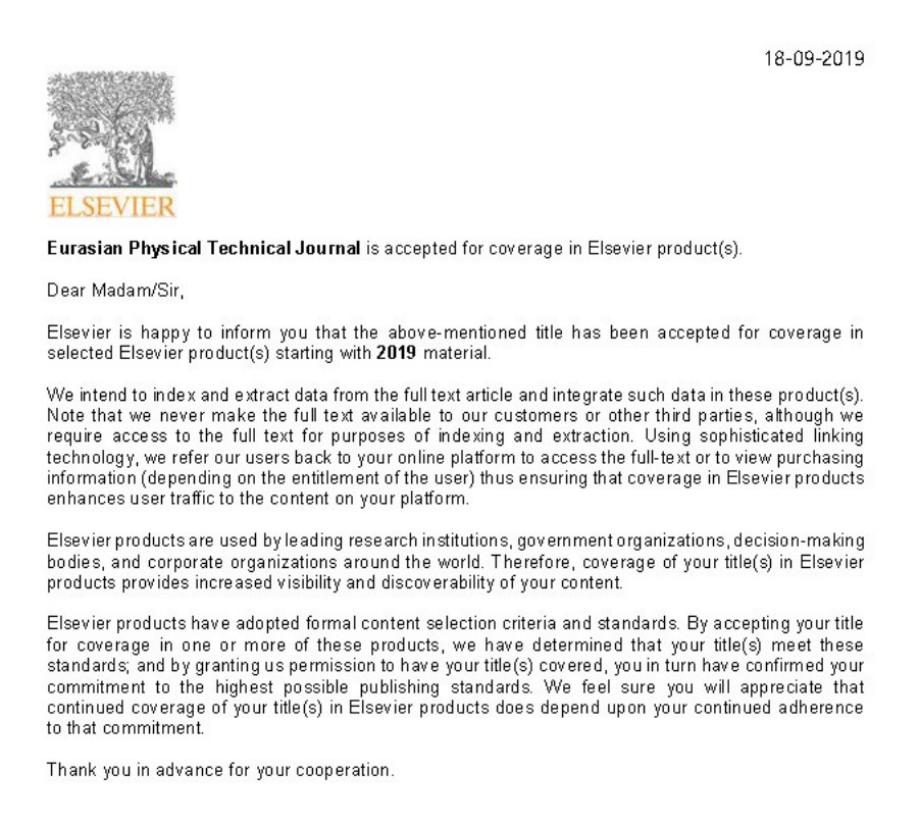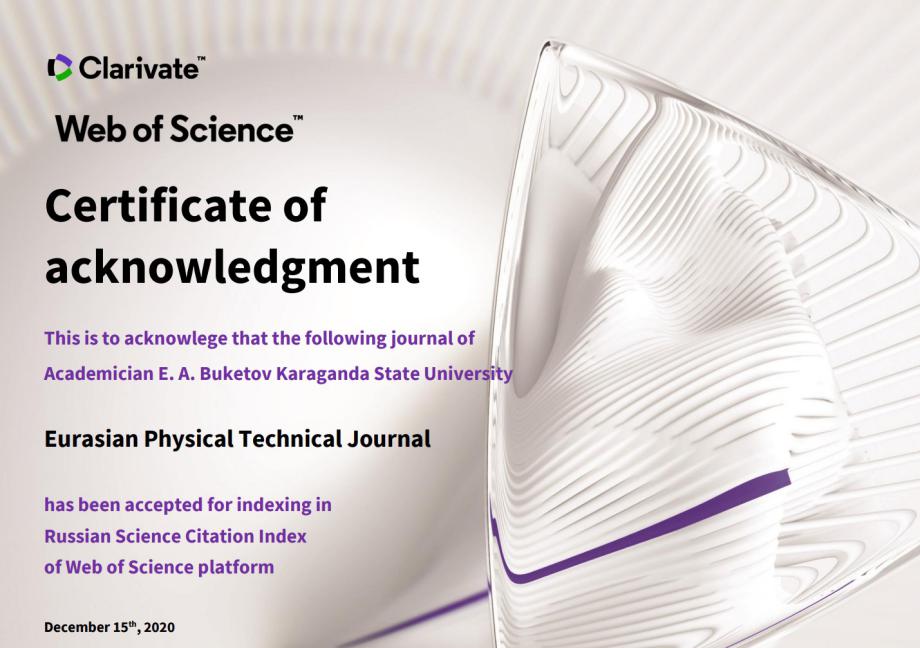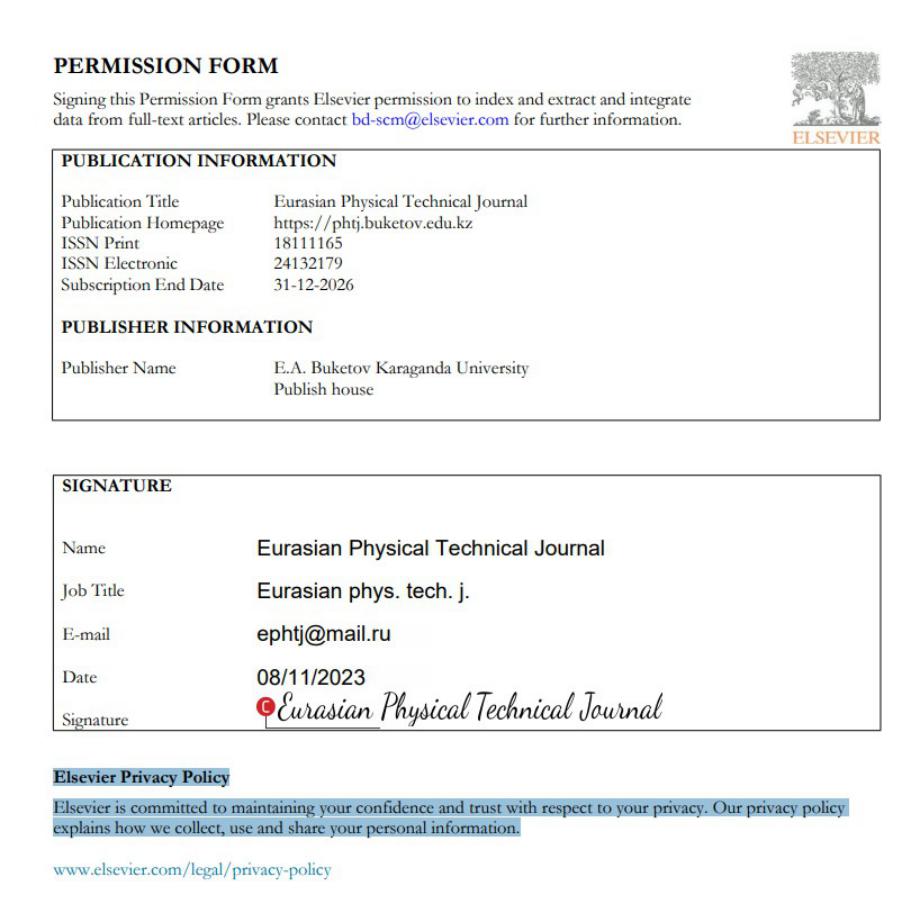EFFECT OF ANODIZING VOLTAGE ON THE PHOTOCATALYTIC ACTIVITY OF FILMS FORMED BY TITANIUM DIOXIDE NANOTUBES
DOI:
https://doi.org/10.31489/2022No4/28-33Keywords:
nanotube, titanium dioxide, photocatalysis, specific surface area, splitting of waterAbstract
The influence of the anodizing voltage during synthesis on the specific surface area and on the photocatalytic activity of the TiO2 nanotube was studied. Films formed by titanium dioxide nanotubes were obtained on the surface of titanium foil by electrochemical anodizing. It has been found that an increase in the anodizing voltage from 20 V to 60 V leads to an increase in the inner and outer diameters of nanotubes, an increase in the growth rate and the interpore distance of nanotubes. The photocatalytic activity of the samples was evaluated by measuring the magnitude of the photoinduced current. The film produced at low voltage generated a current 3.5 times higher than the film produced at high voltage, and the degradation of the dye in the presence of the films was 75 and 38%, respectively, over the same period of time. An increase in the photocatalytic activity of the films is mainly associated with an increase in the specific surface area of the nanotubes. Thus, the values of the specific surface area of TiO2 nanotubes were determined by the method of low-temperature nitrogen adsorption. It has been established that with an increase in the anodizing voltage, the specific surface area of the films decreases.
References
"1 Wang J., Guo R.T., Bi Z.X., Chen X., et al A review on TiO2-x-based materials for photocatalytic CO2 reduction. Nanoscale, 2022, Vol. 32, pp. 11512–11528. doi: 10.1039/d2nr02527b
Kazuhiko M., Kazunari D. Photocatalytic water splitting: recent progress and future challenges. Journal of physical chemistry letters, 2010, Vol. 1, No. 18, pp. 2655–2661. doi: 10.1021/jz1007966
Yucheng L, Yalin L, Zhifeng R. Mini review on photocatalysis of titanium dioxide nanoparticles and their solar applications. Nano energy, 2013, Vol. 2, pp. 1031–1045. doi: 10.1016/J.NANOEN.2013.04.002
Serikov T.M. The effect of electric transport properties of titanium dioxide nanostructures on their photocatalytic activity. Bulletin of Karaganda University. Physics, 2020, Vol.99, No.3, pp.13–21. doi: 10.31489/2020Ph3/13-21
Ibrayev N.Kh., Serikov T.M., Gladkova V.K. Synthesis and investigation of the geometric characteristics of titanium dioxide nanotubes. IOP Conf. Series: Materials science and engineering, 2015, Vol. 81, pp. 1–6. doi: 10.1088/1757-899X/81/1/012121
Morozov R.S. Properties and modification of the surface of microporous spherical TiO2 and SiO2-TiO2 particles obtained by the peroxide method. Diss. for the Candidate of chem. sciences degree, Chelyabinsk, 2018, 154 p. [in Russian]
Ge M.Z., Li Q.S., Cao C.Y., et al. One-dimensional TiO2 Nanotube photocatalysts for solar water splitting. Advanced science, 2017, Vol. 4, No. 1, pp. 1600152. doi: 10.1002/advs.201600152
Sofiane S., Bilel M. Effect of specific surface area on photoelectrochemical properties of TiO2 nanotubes, nanosheets and nanowires coated with TiC thin films. Journal of photocmemistry and photobiology A-chemisrty, 2016. Vol. 324, pp. 126–133. doi: 10.1016/j.jphotochem.2016.03.030
Valeeva A.A., Dorosheva I.B., Kozlova E.A., et al. Solar photocatalysts based on titanium dioxide nanotubes for hydrogen evolution from aqueous solutions of ethanol. International Journal of hydrogen energy, 2021, Vol. 46, No. 32, pp. 16917–16924. doi: 10.1016/j.ijhydene.2020.12.190
Yang W.T., Li M.X., Pan K., et al. Surface engineering of mesoporous anatase titanium dioxide nanotubes for rapid spatial charge separation on horizontal-vertical dimensions and efficient solar-driven photocatalytic hydrogen evolution. Journal of colloid and interface science, 2021, Vol. 586, pp. 75–83. doi: 10.1016/j.jcis.2020.10.071
Li Z., Liu H.M., Yao Z.X., et al. Preparation and characterization of titanium dioxide nanotube array/titanium pH electrode. Chinese journal of analytical chemistry, 2018.,Vol. 46, pp. 1961–1967. doi: 10.1016/j.ijleo.2019.163432
Rempel A.A., Valeeva A.A., Vokhmintsev A.S., Weinstein I.A. Titanium dioxide nanotubes: synthesis, structure, properties and applications. Russian chemical reviews, 2021, Vol. 90, pp. 1397. doi: 10.1070/RCR4991
Liang H.C., Li X.Z. Effects of structure of anodic TiO2 nanotube arrays on photocatalytic activity for the degradation of 2,3-dichlorophenol in aqueous solution. Journal of hazardous materials, 2009, Vol. 162, pp. 1415–1422. doi: 10.1016/j.jhazmat.2008.06.033
Serikov T.M., Ibrayev N.K., Nuraje N., Savilov S.V., Lunin V.V. Influence of surface properties of the titanium dioxide porous films on the characteristics of solar cells. Russian Chemical Bulletin, 2017, Vol. 66, No. 4, pp. 614–621. doi: 10.1007/s11172-017-1781-0
Lia H., Wanga G., Niua J., Wanga E., Niub G., Xiea Ch. Preparation of TiO2 nanotube arrays with efficient photocatalytic performance and super-hydrophilic properties utilizing anodized voltage method. Results in Physics, 2019, Vol. 14, No. 102499. doi: 10.1016/j.rinp.2019.102499
"

